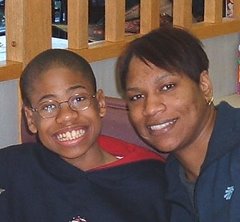By Dan Olmsted
UPI Senior Editor
There's a Steely Dan album called Pretzel Logic that could be the theme song of the Centers for Disease Control and Prevention as it struggles with concerns over vaccines and autism.
At least in our view, it is a bit twisted -- logically speaking -- to simultaneously spend taxpayer money to keep studying whether a mercury preservative causes autism, yet recommend that pregnant women and children get vaccines containing that preservative. Especially so when alternatives are available that are free of the preservative, called thimerosal.
It is puzzling to urge, as the CDC did in 1999, that thimerosal ought to be phased out as soon as possible from all childhood vaccines used in the United States -- yet successfully fight efforts this year by state legislatures to codify a ban.
It is peculiar to issue an "Autism Alarm," as the CDC did in 2004 -- then publish a 72-page annual report in 2005 that mentions the perils of Rocky Mountain Spotted Fever, cryptosporidiosis, leprosy and the four people "killed by rabies transmitted through transplanted organs or tissues in 2004," yet never use the word autism, not once. (Check it out at www.cdc.gov/cdc.pdf)
Perhaps the oddest, though subtlest, anomaly is the seeming resistance by the CDC to the idea that the autism rate might be declining.
Our last column reported a new study that suggests it could well be. The study's authors are firmly convinced a drop in autism cases in two separate government databases -- one run by the CDC, the other by the state of California -- proves thimerosal is the big culprit in autism. That's a step we're not ready to take, to the consternation of some in the anti-thimerosal movement.
But wouldn't even tentative signs of a decrease, for whatever conceivable reason, be welcome and hopeful?
Instead, the CDC seems keen to clobber any suggestion that autism might be declining. In Thursday's Boston-area Herald News Tribune, reporter Jon Brodkin quotes Dr. Robert Davis, director of the immunization safety group at the CDC, as saying: "I don't think this study can really be taken to provide any evidence one way or another."
Davis also said one of the databases the study authors used -- the CDC's own Vaccine Adverse Events Reporting System -- is unreliable because anyone can report any health problem as a possible vaccine side effect.
Fair enough, but new cases in that database seem to be declining in tandem with new cases in California's special education system. And those California numbers are widely regarded as the most reliable count of full-syndrome, professionally diagnosed autism cases in the United States. P.S.: The most recent figures from the U.S. Department of Education also dropped.
But so what, say the CDC and others who are on record (and, let's face it, on the line) backing thimerosal to the hilt and asserting there is no connection between vaccines and autism.
"The Department of Education numbers are skewed, another official said, because the DOE did not make autism a separate diagnosis until the 1990s," Brodkin reported. "That led to an artificial increase because children who previously had different diagnoses were then considered autistic, said Dr. Marie McCormick, a Harvard professor who chaired an Institute of Medicine committee that dismissed any link between vaccines and autism."
What's intriguing is how all this dovetails with comments made last summer by Dr. Julie Gerberding, director of the CDC, at a press conference in Washington set up to defend vaccine safety. Here is the question she was asked: "Can you address the ... California study that basically showed that there was an increase in autism in direct relation to the 1990s when the series of vaccines were increased, and now since thimerosal has been taken out there is a slight decrease in autistic cases?"
Responded Gerberding:
"The California study, as you know, is an ongoing study and they are addressing the estimates of autism prevalence on a quarterly basis, sort of like the stock market bounces around a little bit. The most recent reading from that study is in fact that the rates are increasing, they have not shown a decline."
That's one way to look at it. Here's another, from reporter Thomas Maugh II in The Los Angeles Times on July 13: "The number of newly diagnosed cases of autism in California, which had been skyrocketing for more than a decade, has leveled off and may even be declining, according to new data compiled by the state Department of Developmental Services."
Some parents who listened in on Gerberding's comments did not like comparing the autism rate to the stock market. But the bigger issue is the odd, official resistance to the idea that any autism rate anywhere in the United States might be going down, however slightly, however inconclusively, however briefly.
So the VAERS data don't count, the California numbers are bouncing, the Department of Education stats are unreliable. Is any of this starting to sound like, "Pay no attention to the man behind the curtain?" And do we all remember who said that?
--
E-mail: dolmsted@upi.com
© Copyright 2006 United Press International, Inc. All Rights Reserved
Printed here with permission.
For information, resources and practical strategies please visit:
www.AutismConcepts.com and www.child-autism-parent-cafe.com.
Forget what you haven't heard… Family site shares news, resources, announcements and free or low-cost ways to help us manage day-to-day living with autism.
Crystal Brown

About Me

- Crystal
- AutismConcepts.com and Child-Autism-Parent-Cafe.com share a large collection of useful autism information, resources, and how-to articles written by authors who are touched by autism, offering practical solutions to families. Particularly minority and underserved families and caregivers who may not know what to do or where to go for help.
MJ And Me

Blog Archive
-
▼
2006
(213)
-
▼
March
(26)
- Childhood Disorder Identifies Possible Cause of Au...
- Take The Autism Quotient Test for Adults
- Device warns you if you're boring or irritating
- Media AdvisoryMarch 29, 2006Contacts:Wendy Fournie...
- Vaccines show sinister side
- Independent Living Research Utilization: IDEA Webcast
- Clinic Reports Dramatic Results Treating Autism, A...
- Mercury Generation March Update
- Gift enables Columbia to open brain study center
- "The Puzzle of Autism" - A Teacher's Guide
- The Age of Autism: Mercury creeps back in
- Vaccines the subject of new Congressional investig...
- NYS - Information Sessions on NYS Implementation o...
- The Age of Autism: Pay no attention
- Advocates, Physicians and Entertainers to Gather f...
- M.I.N.D. Institute Launches Largest Biomedical Ass...
- Study links vaccines containing mercury with autism
- Lawmakers Urged To Support Services For Autistic A...
- Report: Government knew of autism link
- US Schools Failing Children With Disabilities
- Autism Rates Drop After Mercury Removed From Child...
- New Treatment For Autistic Children Comes to Madison
- Voucher Plan Not Right, Public School Advocates Say
- The Age of Autism: Less is beautiful
- Study links autism, vaccine
- Time for CDC to Come Clean
-
▼
March
(26)